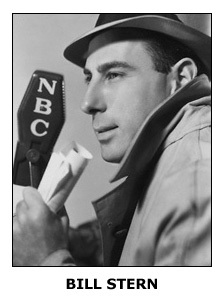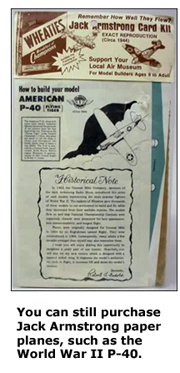| HOME |
 |
For example, Bill Stern. He was a sports announcer who'd spin incredible, “Believe-It-or-Not”-like stories ridiculously embellished (though for a few years I actually swallowed these fairy tales). In “Radio Days,” the Stern character is called Bill Kern and the tale he tells is only a slight exaggeration of the Stern style. Kern’s story is about a pitcher who loses an arm, then a leg, then goes blind, but Today the view is that Gray never should have been called up to the majors, that the Browns did it to cash in on what some considered a sideshow act. But it was 1945, we were at war and most of the good ballplayers were in the Armed Forces, and Gray, after all, had batted .333 the season before with Memphis of the Southern Association. At Memphis, Gray even managed to hit five home runs, the only home runs of his professional career. With St. Louis, Gray batted only .218 in 77 games, Stratton won 15 games for the White Sox in 1937 and again in 1938. Then he lost his leg and he retired . . . temporarily. In 1942 he attempted his first comeback, retired again, but in 1946 he pitched for Sherman of the East Texas League – and won 18 games. I don’t recall Bill Stern's versions of their stories, but he undoubtedly moved listeners to tears. In some ways Stern reminded me of newsman Paul Harvey, who also stretched the truth to heighten the drama. What follows are vignettes from my version of "Radio Days," some similar to scenes in Allen's film. Offers we couldn't refuse (but should have) One such "premium" was the Masked Avenger decoder ring mentioned in "Radio Days." I know for sure "Captain Midnight" offered several decoding devices over the years and I think "The Lone Ranger" peddled at least one. These toys generally were worthless, such as the "Jack Armstrong" pedometer. I used it to measure the distance from our house to my school and also to the house where one of my cousins lived. The reading obviously was wrong. According to the pedometer, every place I walked was exactly one-half mile away.
However, there was one offer well worth taking. It was made in 1944 by Wheaties and “Jack Armstrong,” a nightly series about a high school athlete who had all kinds of adventures. The offer: In exchange for a nickel and two Wheaties boxtops, you could purchase a Jack Armstrong model airplane. Perhaps you received two planes, I’m a bit fuzzy on this detail. There were 14 models in the Jack Armstrong collection. They were heavy paper replicas of such World War II airplanes as the Japanese Zero, the German Focke-Wulf, the American Grumman Hellcat, the British Spitfire, and my favorite, the Curtis P-40 of Flying Tigers fame. The model parts had to be cut out, folded, then assembled with mucilage. An important step was placing a penny inside the nose cone, the coin providing additional weight that was necessary to successfully fly the plane. At age 6, I was heavy-handed with the mucilage, making my models the sloppiest fleet of planes on the street. In the 1970s I learned these planes were still available, so I ordered a few of them, only to discover my skill as a plane-builder had not improved. In preparing this article I discovered you can still buy all 14 models. I’ll probably purchase the entire set, but will ask my wife to assemble them. |
They call me The Let’s Pretend Kid! For me, radio and those outdoor games were occasionally in conflict, particularly on Saturday mornings. I was known as the kid who loved “Let’s Pretend,” a classic program that each week dramatized famous children’s stories (“The Emperor’s New Clothes,” “Robin Hood,” “Hansel and Gretel,” “Cinderella” and others, including my favorite, “Rumpelstiltskin”). I recall the name of only one member of the program’s repertory company, Jack Grimes, who for a few years also was the voice of Jimmy Olsen on radio’s “Adventures of Superman.” “Let’s Pretend” was sponsored by the cereal, Cream of Wheat, and try as I might, I’ve never been able to purge from my brain the melody and the first two lines of the commercial jingle:
If this strikes a responsive chord and you’ve tried unsuccessfully to remember the rest of the song, well, I looked it up:
As with the products that sponsored my other favorite programs, Cream of Wheat did nothing for me. We had it occasionally, but in the Major home, breakfast clearly was our least important meal. But back to the point of all this: The program aired at 11 a.m. (or 11:05, it might have been preceded by a five-minute newsbreak) and by that time I was usually playing basketball next door in the Smolinski driveway with a bunch of older boys. My mother, aware that I didn’t want to miss the show, would pop her head out our back door and shout, “Jackie, it’s time for ‘Let’s Pretend!’ ” and I’d excuse myself from the game and go into our house to listen. I’d resume playing basketball at 11:30. Naturally, because I was a bit older than the typical "Let's Pretend" listener (and because my mother called me "Jackie" instead of a more grown-up "Jack"), I was the butt of several jokes, but it was a small price to pay. Besides, I didn’t particularly care what others thought or said about me. It's a trait I got from my father and passed on to my children. First the music, then the food Were I to include this scene in “Radio Days Two,” the background music would be “Harbor Lights,” by Sammy Kaye’s orchestra. Whenever I hear it, which these days is practically never, I have an instant flashback and a craving for prime rib. |
Major, Mager ... at first it made no difference If you fiddled with the dial, especially in the evening, you could pick up distant radio signals. There was a station from Fort Wayne, Indiana, that came in loud and clear, along with another from New Orleans. But the only out of town stations we paid much attention to were those in New York City that broadcast sports events. Of particular interest to my father and me during the 1949-50 basketball season was the CCNY team that would go on to win both the National Invitation and the NCAA tournaments, the only time this would ever happen. In those days the NIT was the more prestigious, with the NCAA getting little attention because it was much smaller than today’s version and the games might have been played in Siberia for all the coverage they received. The NIT, in Madison Square Garden, is where teams wanted to be, and it was possible to participate in both tournaments because they were not played concurrently. My father and I became interested in CCNY long before the tournaments because one of the team’s players – not a starter, but a reserve who received a lot of playing time – was Norm Mager. Different spelling, but similar pronunciation. He became my father’s adopted son, my adopted brother. We listened to several CCNY games, cheering him on, and we celebrated the team's unique success in the tournaments. Unfortunately, a year later, the basketball point-shaving scandal broke, and Norm Mager was one of the seven CCNY players arrested. Suddenly my father and I viewed him much differently. After all, he wasn't really a Major. The amazing baseball psychic I forget the players involved in my father’s demonstration, but will make an educated guess that they were Giant pitcher Sal Maglie and Dodger first baseman Gil Hodges. My father correctly predicted every pitch during one sequence which ended when Hodges struck out. I was greatly impressed – until my father admitted he had heard the broadcast at work that afternoon. I was listening to a re-broadcast. Until then I had no idea there was such a thing. However, I was well aware of baseball broadcasts done in a studio, not at the stadium. Games were re-created using sound effects while the announcer put his own spin on what he was reading off a teletype machine. Sometimes you couldn’t tell the difference between this and a real play-by-play broadcast. Helen Major, boxing fan I liked Graziano, a colorful boxer who turned every bout into a brawl. Today it seems strange that at 9 years of age I was interested in boxing, but times were different back then. I had my own punching bag and boxing gloves. Thanks to heavyweight champions such as Jack Dempsey and Joe Louis, boxing was a mainstream sport; a championship fight drew as much media attention as the Super Bowl does today. It was in the late 1940s that Zale and Graziano had their memorable fights. Well, two were memorable, the third merely established once and for all that Zale was the better boxer. My mother was so pleased. In the first fight, Zale knocked Graziano down early, then Graziano took over, battering Zale to the point it looked like the fight would end in round five. But not only did Zale keep going, he knocked out Graziano in round six. Things were reversed in the rematch. Zale hit Graziano so hard and so often during the first five rounds that Graziano’s eyelids puffed up, making him virtually blind. I get all squirmy when I recall what Graziano’s handlers did between rounds five and six. Let’s just say they managed to open those eyelids enough that Graziano regained some vision. Graziano went toward the bobbing and weaving shadow in front of him and started swinging. Luckily for him, that shadow was Zale, not the referee, and he won the fight in the sixth round. This temporarily gave me bragging rights, but my mother obviously had the last laugh after the third fight, a one-sided win for Zale. (It wasn’t until I researched this piece that I read Zale had been hired to play himself in the Paul Newman film, “Somebody Up There Likes Me,” the biography of Graziano. The story goes that during preparation for the movie, Newman and Zale were sparring when he actor got carried away and punched Zale a wee bit too hard. Zale responded by decking Newman, who, had this been a real fight, would have been counted out several times. Don’t know if this is a true story, but that’s what I read.) |
| Continued |
| HOME • CONTACT |

 keeps on pitching. It's the tale Bill Stern would have told if Pete Gray and Monty Stratton were rolled into one baseball player and given Ray Charles' eyesight. Gray was a one-armed outfielder who played for the St. Louis Browns of the American League; Stratton was a Chicago White Sox pitcher who lost his right leg as the result of a hunting accident.
keeps on pitching. It's the tale Bill Stern would have told if Pete Gray and Monty Stratton were rolled into one baseball player and given Ray Charles' eyesight. Gray was a one-armed outfielder who played for the St. Louis Browns of the American League; Stratton was a Chicago White Sox pitcher who lost his right leg as the result of a hunting accident. Another "premium" was a precursor of the mood rings that were all the rage 25 years later. This ring contained a small square of some magic paper that turned different colors as the weather changed. When the ring turned white, that meant it was snowing, or about to ... perhaps in a few months.
Another "premium" was a precursor of the mood rings that were all the rage 25 years later. This ring contained a small square of some magic paper that turned different colors as the weather changed. When the ring turned white, that meant it was snowing, or about to ... perhaps in a few months.